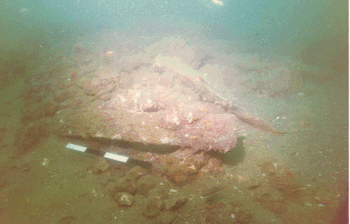Under Water Archaeology
The sphere of excavation has been extended to off shore. Tamil Nadu is famous for a number of Ports on the Eastern seacoast.
The Ports of Sopatanam, Kaverippumpattinam, Tranquebar, Karaikkal, Periyappattinam and Kanyakumari are mentioned in the chronicles of foreign travellers as well as in Sangam literature. Kavirippumpattinam is said to have submerged under sea.
Hence, the Archaeology Department in collaboration with the National Institute of Oceanography, Goa in the year 1981 conducted a preliminary exploration. By deploying sophisticated equipment it has spotted some heaps in about 30-meter depth off the shore of Poompuhar.
Airlift operations in 7m depths revealed three courses of stone masonry off Vanagiri (the near by site at Poompuhar).The stone blocks vary in size 30x20x5 cm, 65x40x10 cm and 60x35x10 cm.
The approximate date of the structures can be ascertained to 2nd century BCE - 4th century CE.The shipwreck discovered in 1991 at a water depth of 19 m was explored further and the wooden planks of the hull were traced. The ship is about 50 m in length and 15 m in width. A heavily encrusted cannon measuring 2.1 in length was located close to the wreck.
The most important findings were lead ingots recovered from the wreck. Some of them bear the name of the English company, W. BLACKETT, which was the large-scale producer of the lead ingots. Two ingots are stamped with the year 1791 while others with 1792. The average weight of the ingots is 68.5 kg. They are 87-90 cm length , 15 –18 cm breadth and 6 cm thick. Hence, an exclusive Underwater Archaeological Site Museum was established at Poompuhar.


